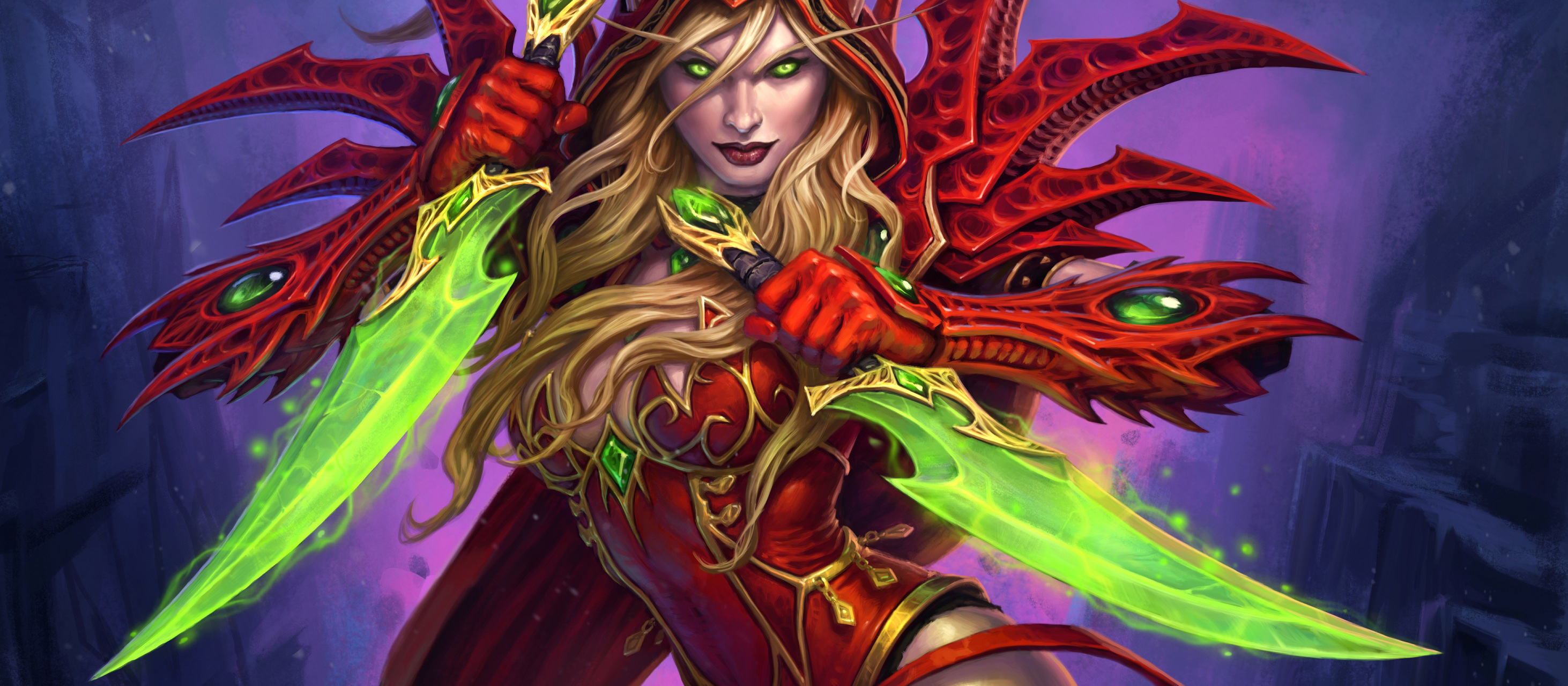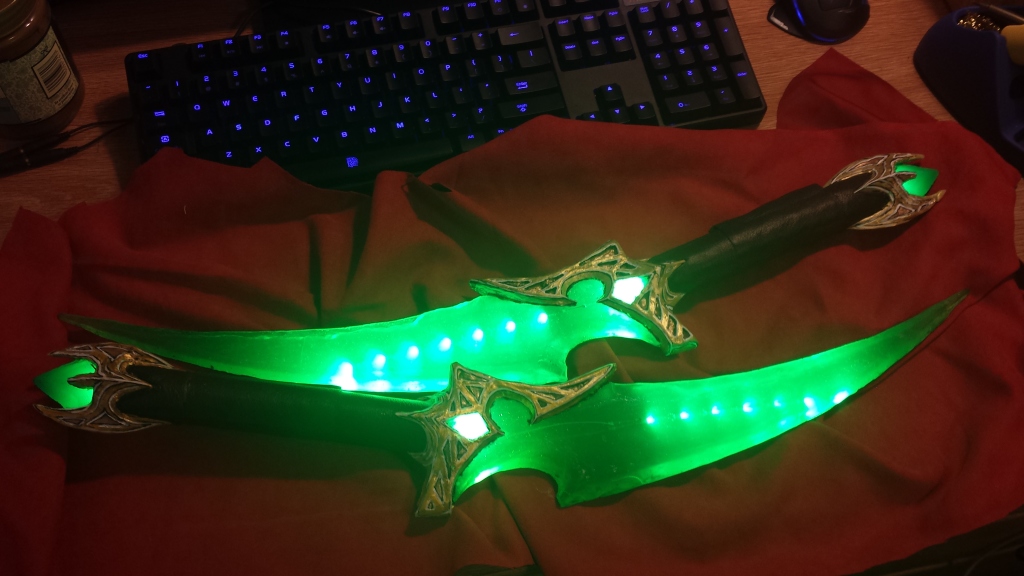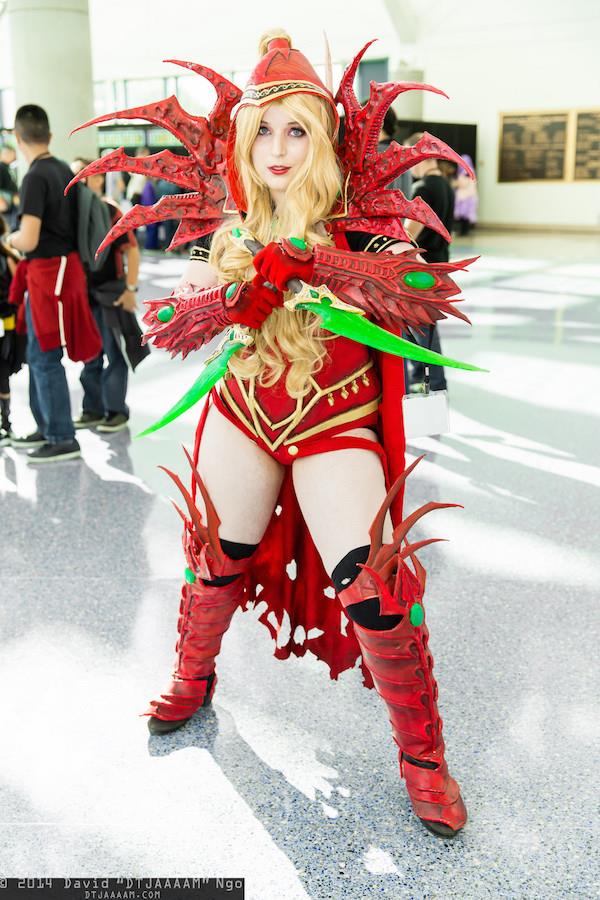The first step was to pattern out Valeera’s daggers (loosely based on Shards of Azzinoth dropped by Illidan in the Black Temple Raid in WoW), however in Glenn Raine’s hero portrait of Valeera, they look significantly different. Because of this I took to creating my own blueprint of her daggers — which you can get here.
I then sandwiched three pieces of foam poster-board together, one the size of the full dagger, and two that were smaller, leaving a gap that I would fill in with clay to act as the sharp edge.


















